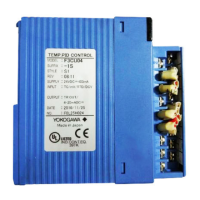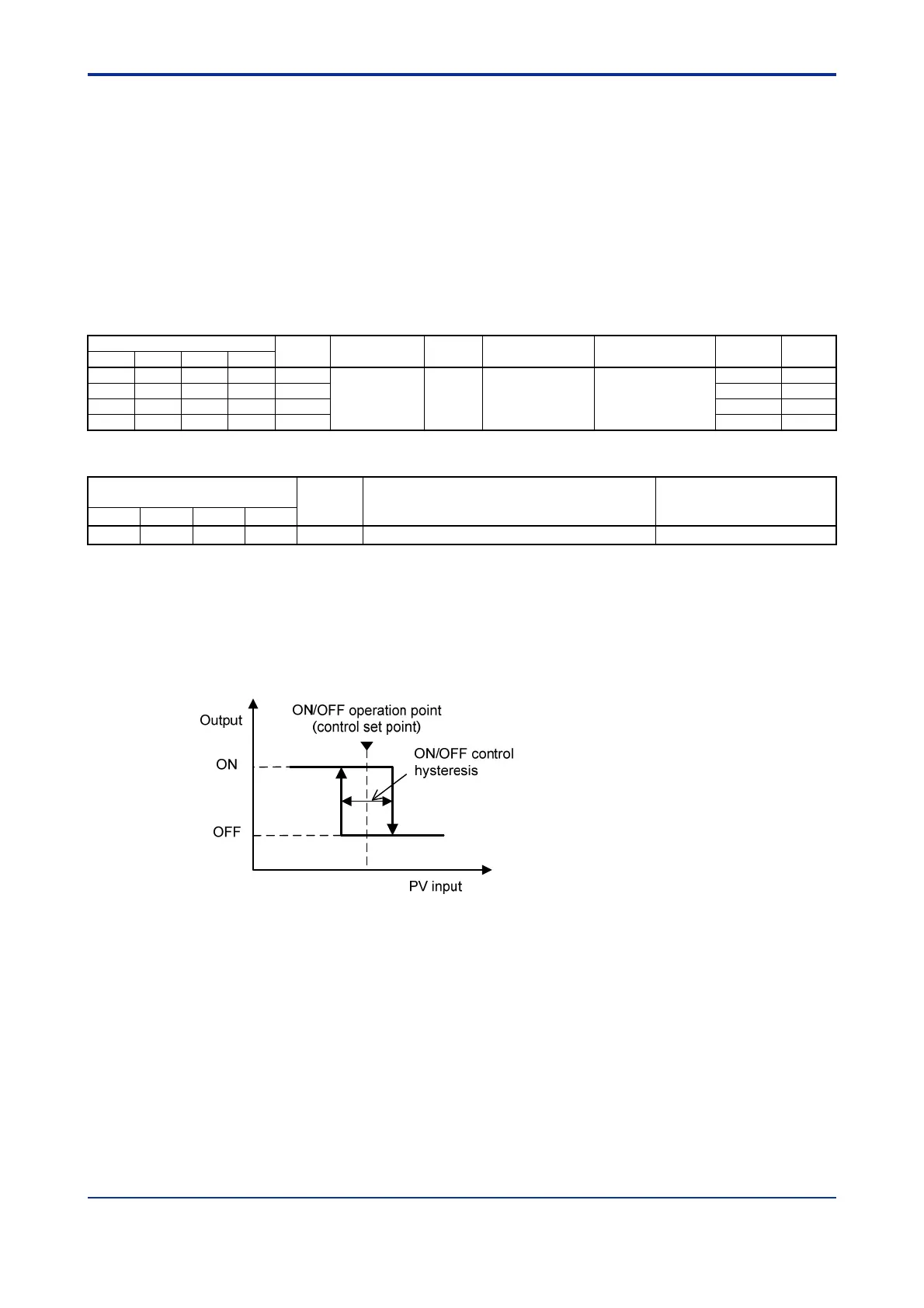C2-7
IM 34M06H62-02E 2nd Edition : June 2008-00
C2.4 Control Types and their Operations
Two control types are available: ON/OFF control output and PID control output.
C2.4.1 ON/OFF Control Output
In ON/OFF control, the module turns on or off an output according to the deviation
between the control set point (CSP) and the PV. To set the control type to ON/OFF
Control, set the Control Type Selection (OT) parameter to 1. For details, see Section
C2.1, “Control Type Selection."
Table C2.6 I/O Registers related to ON/OFF Control
Data Position Number
Symbol Description Unit Data Range Default Value Attribute
Stored
Loop 1 Loop 2 Loop 3 Loop 4
212 412 612 812 1.HYS
ON/OFF control
hysteresis
Industrial
unit
0 to (PRH - PRL) (PRH - PRL) x 0.5%
RW
232 432 632 832 2.HYS RW
252 452 652 852 3.HYS RW
272 472 672 872 4.HYS RW
Table C2.7 Input Relays related to ON/OFF Control
Input Relay Number
Xnn
*1
Symbol Description Data Range
Loop1 Loop2 Loop3 Loop4
X05 X13 X21 X29 HOUT.R Heating control output 0: OFF 1: ON
*1 denotes the slot number where the module is mounted.
The hysteresis parameters specify the minimum deviation of the PV from the control set
point, or the hysteresis that will trigger an ON-to-OFF or OFF-to-ON output transition.
The hysteresis is set for each controller loop in industrial unit. The following description of
hysteresis assumes that the Forward/Reverse Switch parameter is set to Reverse
Control. For details on forward control and reverse control, see Section C6.1, “Forward
Operation and Reverse Operation"
Figure C2.2 Schematic Diagram of ON/OFF Control (for reverse operation)
In ON/OFF control mode, the output turns off only when the PV exceeds the CSP by a
certain amount, and turns on again when PV is less than the CSP by a certain amount,
as shown by the arrows in the figure. The difference between the PV at which the output
turns off and the PV at which the output turns on is called hysteresis. If the hysteresis is
too small, chattering (output turning on and off too frequently) may occur. Increase the
hysteresis to prevent chattering as necessary.

